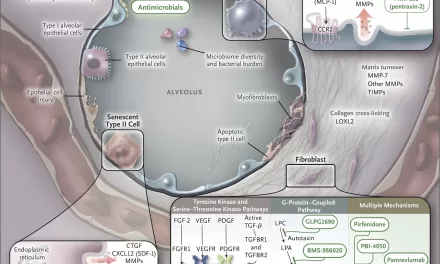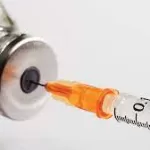The research is described in the Jan. 9 issue of the Proceedings of the National Academy of Sciences, or PNAS.
Parkinson’s is a frustrating and all too common disease. Slowly, people with Parkinson’s lose brain cells and other neurons needed to make the neurotransmitter dopamine. This progressive loss leads them to develop rigid, tense muscles and tremors, and causes difficulties with sleep, mood, speech, eating and movement.
Commonly used treatments include drugs that replace the dopamine. Other treatments, such as deep-brain stimulation, help with movement problems that develop as the disease worsens. But while these types of treatments alleviate symptoms, they are not a cure, come with side effects and do not change the trajectory of the disease. An estimated 500,000 people in the United States live with Parkinson’s.
“To change the course of this disease, we need to address its cause. For many Parkinson’s patients, that apparent cause is the accumulation of a toxic protein called alpha-synuclein, in and around their neurons,” said Disney, the endowed Institute Professor and chair of the chemistry department at The Herbert Wertheim UF Scripps Institute for Biomedical Innovation & Technology in Jupiter, Florida.
Unfortunately, alpha-synuclein has proven an especially challenging protein to medicate due to its unruly, disorganized form and lack of clear druggable structures, Disney added.
“In situations like this, we have found that targeting the RNA needed to build the toxic protein may be an optimal strategy to slowing or even stopping disease progression,” he added.
Disney’s lab focuses on interfering with or degrading RNA needed to assemble the proteins implicated in disease. This is a relatively new concept. Most drugs on the market work by binding to proteins to change their function. But not all disease-causing proteins can be successfully targeted with drugs. Some are too changeable, some lack druggable structures, some fold in a way that conceals their active sites.
Disney’s approach is to prevent the problematic proteins from being made in the first place. To do that requires targeting their RNA. Here’s why: Proteins are assembled in cells through a process that involves the reading and translation of a gene, the transport of that information from the cell nucleus to its cytoplasm via messenger RNA, and the assembly of protein-building factories called ribosomes, also built of RNA, in the cytoplasm. The ribosomes stitch the proteins together one amino acid at a time. Disney’s potential Parkinson’s drug, which he calls Syn-RiboTAC, binds to a section of messenger RNA that tells a ribosome to start protein assembly. Without the “start” signal, the toxic protein isn’t built.
Disney’s first authors on the PNAS study were graduate students in his lab. Yuquan Tong is a current student of the Skaggs Graduate School of Chemical and Biological Sciences on the Jupiter, Florida campus, and Peiyuan Zhang, Ph.D., is a recent graduate, now a postdoctoral researcher at the Massachusetts Institute of Technology.
“In Parkinson’s mouse models, we see that reducing alpha-synuclein by even 25% is therapeutically beneficial,” Tong said. “In studies from induced neurons of Parkinson’s patients, we see the Syn-RiboTAC strategy reduces alpha-synuclein production by about 50%. We saw that adding the RiboTAC produces a significant gain in potency.”
Disney added that the compound also showed good selectivity, important for avoiding unwanted side effects, and improved brain-barrier penetration relative to other compounds they studied.
Other collaborators on the study included physician-scientist M. Maral Mouradian, M.D., of Rutgers University, whose patients donated tissue to create induced neurons.
Much work lies ahead, as the team works to refine the two-headed drug and improve its drug-like properties, the scientists said. Preparing an experimental compound for clinical trials in humans can sometimes take years, as refinements are made and data are gathered.
“The medical need for a truly disease-modifying treatment is significant, and we know that patients are awaiting better options,” Disney said. “We’re hopeful that we’re on the road to a better days for people living with Parkinson’s.”











